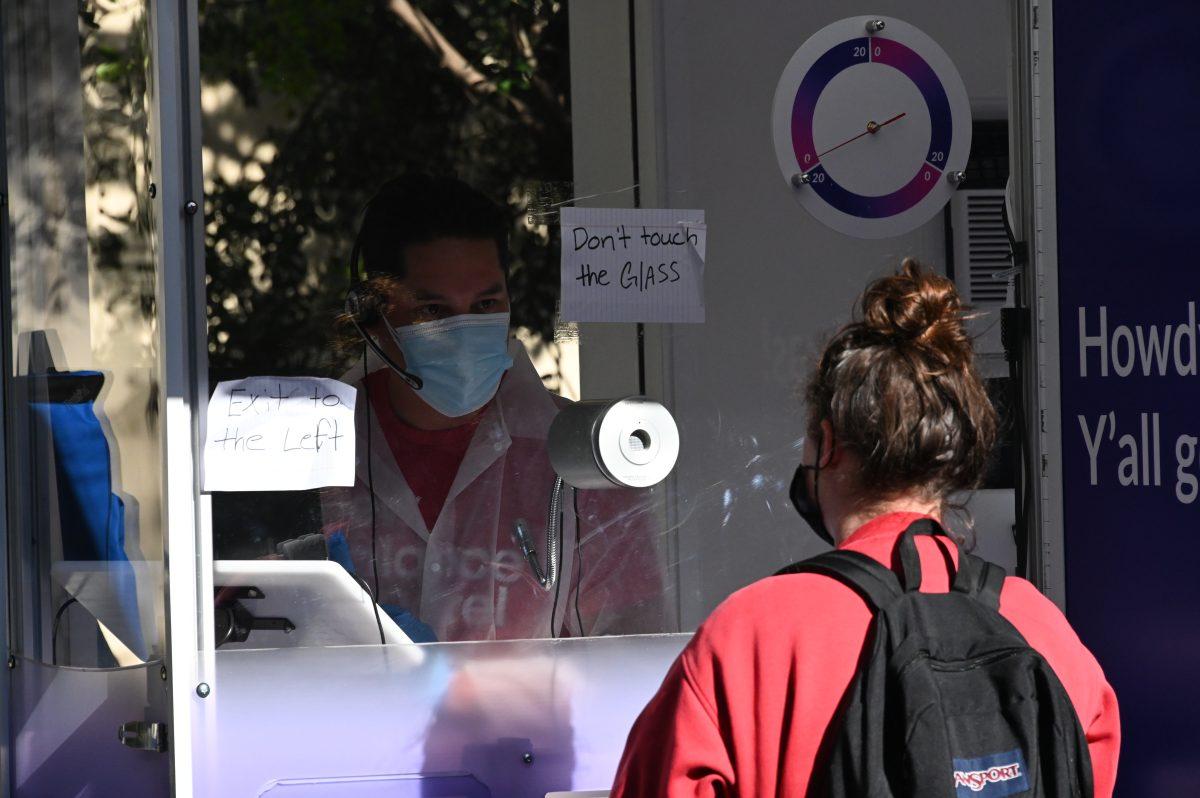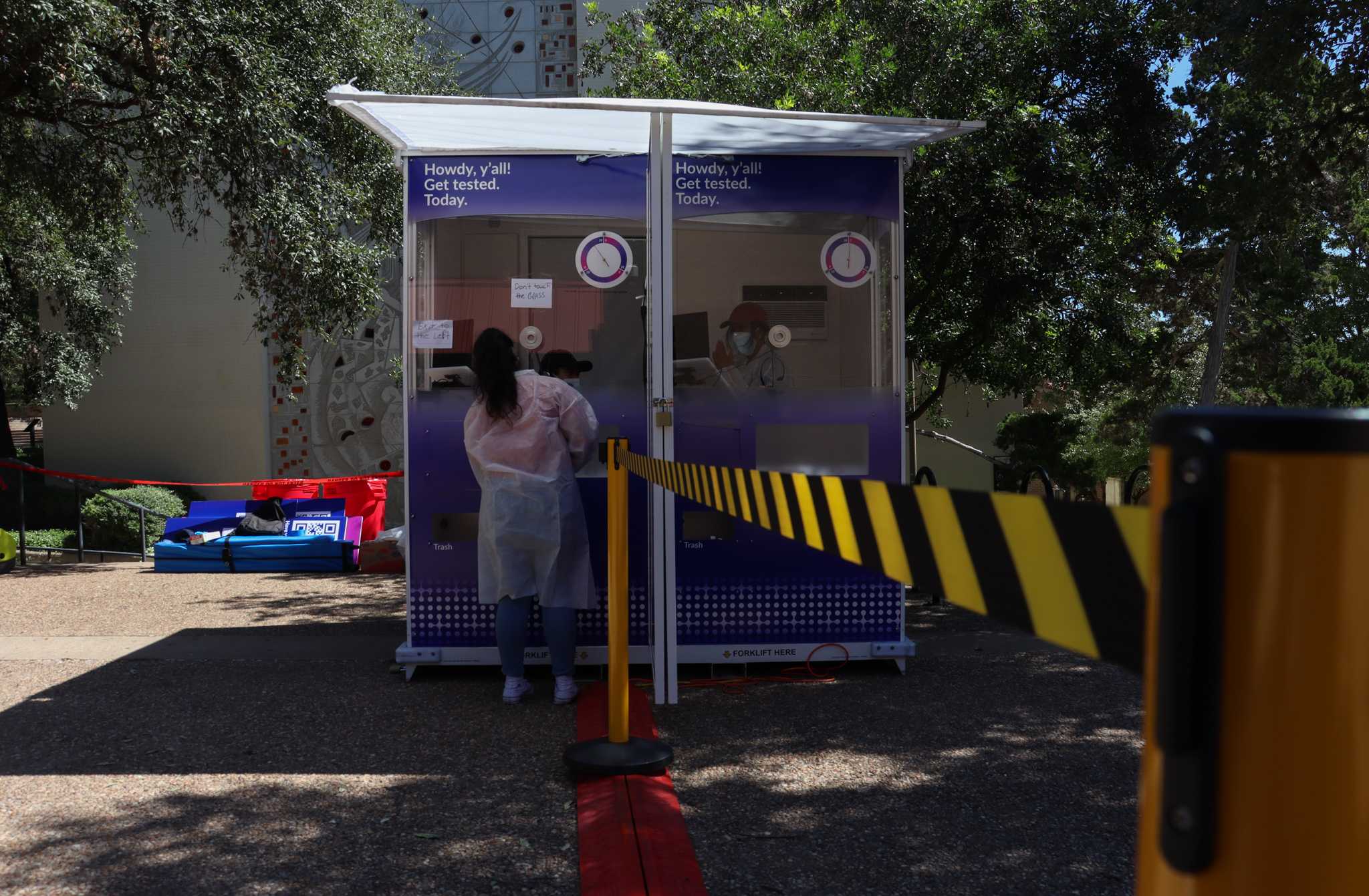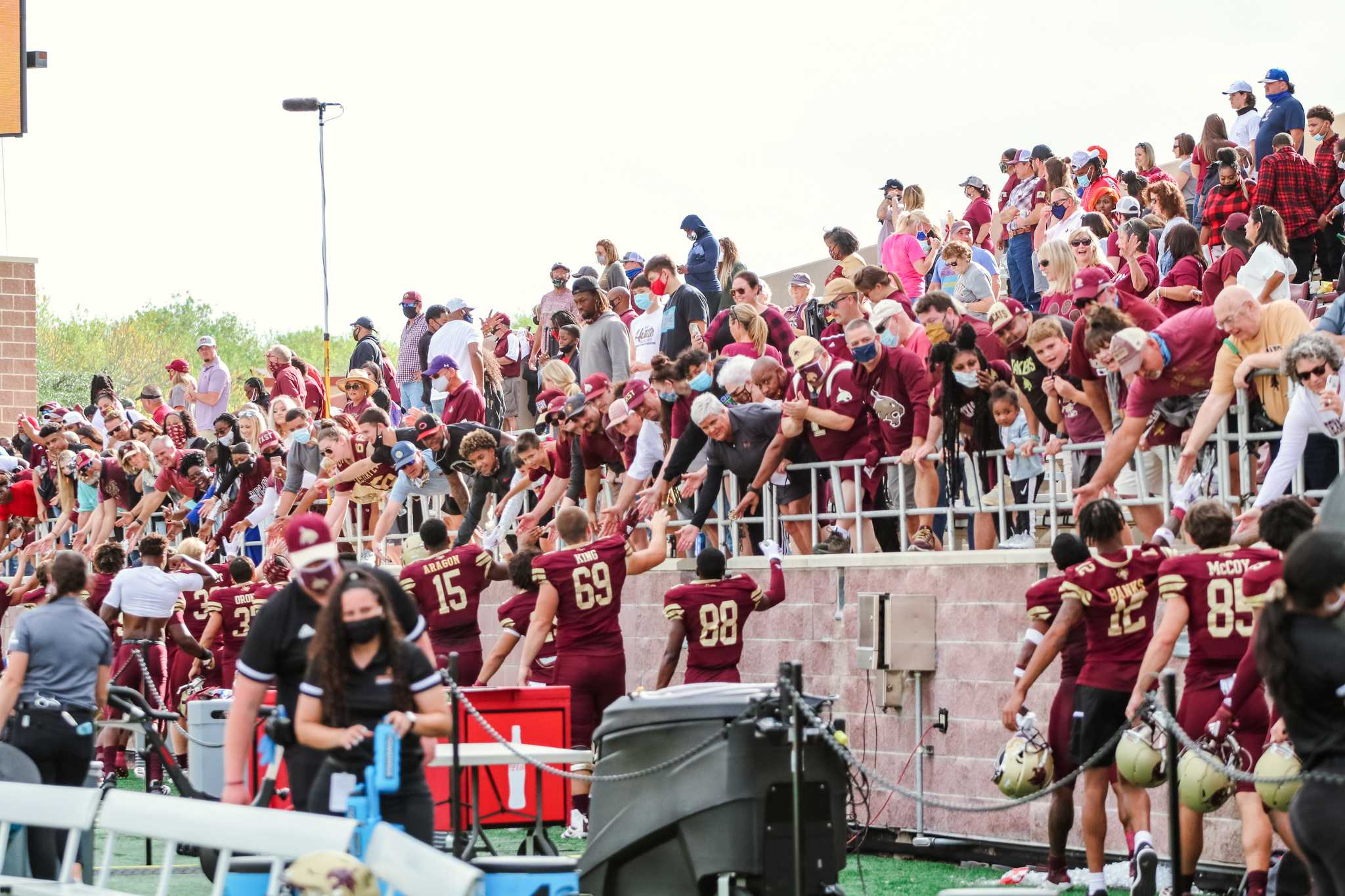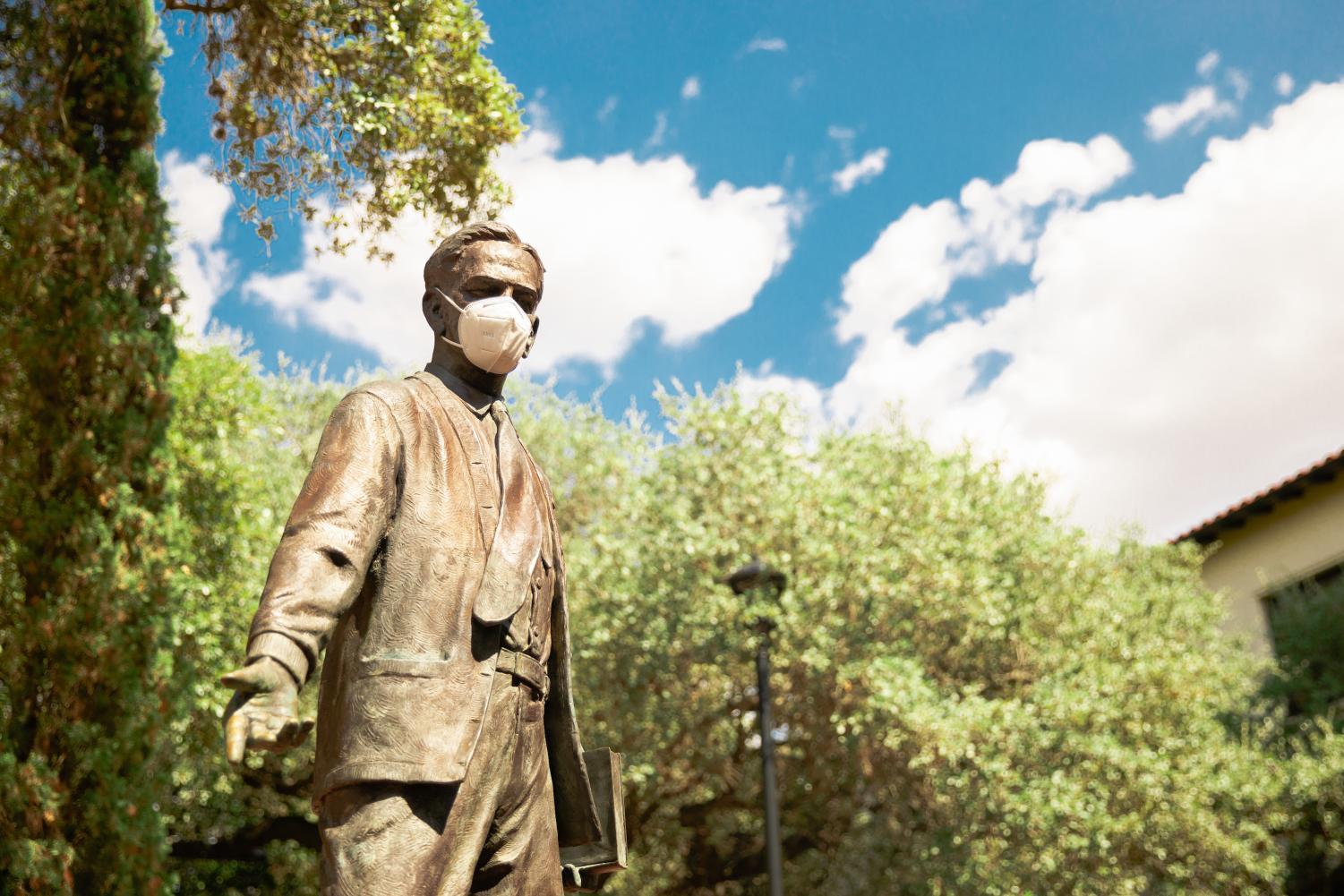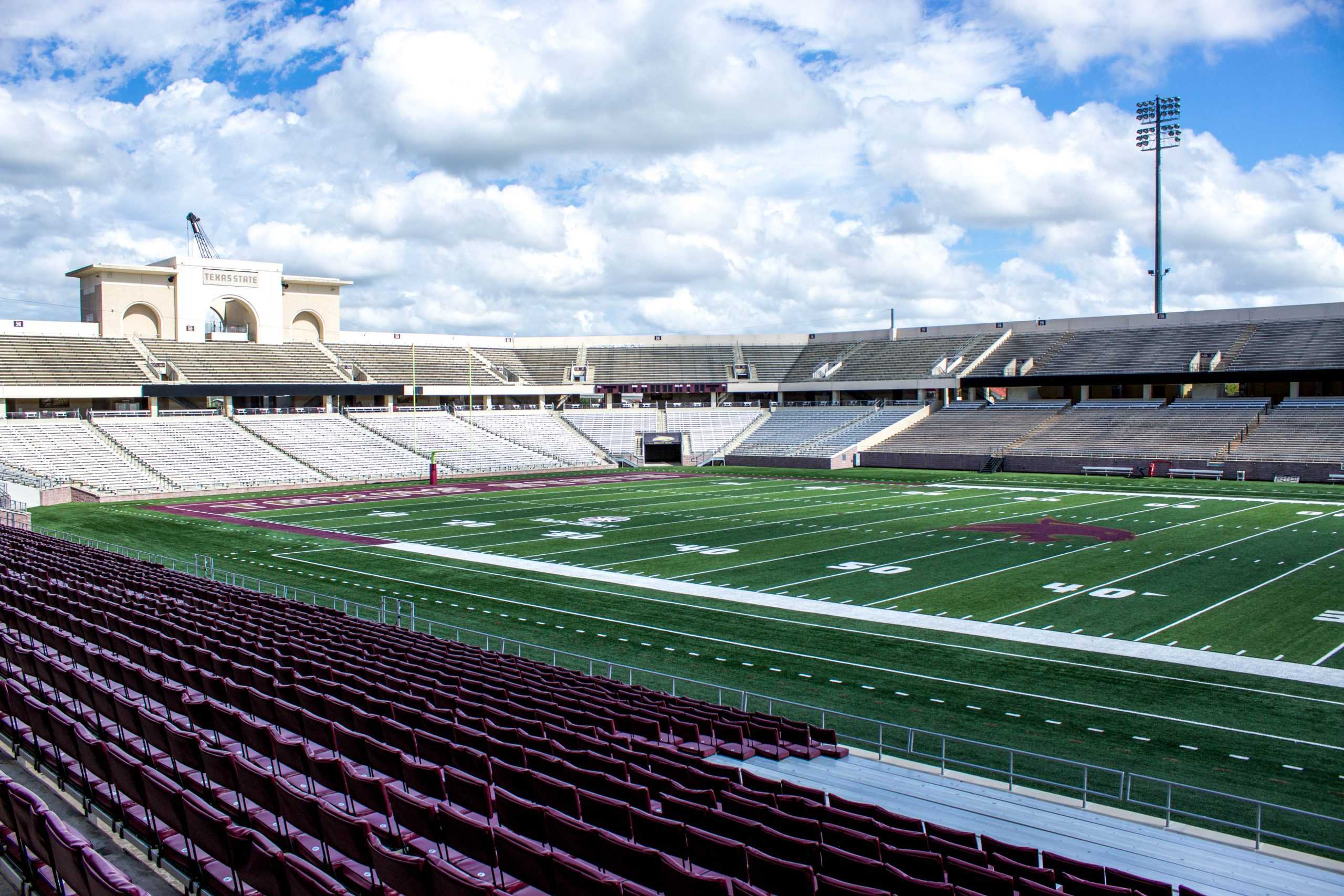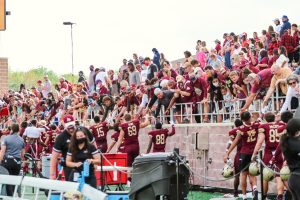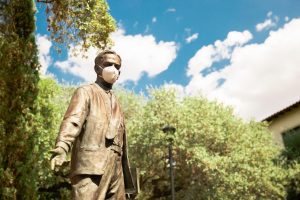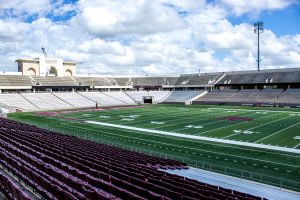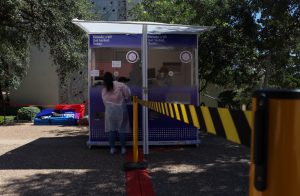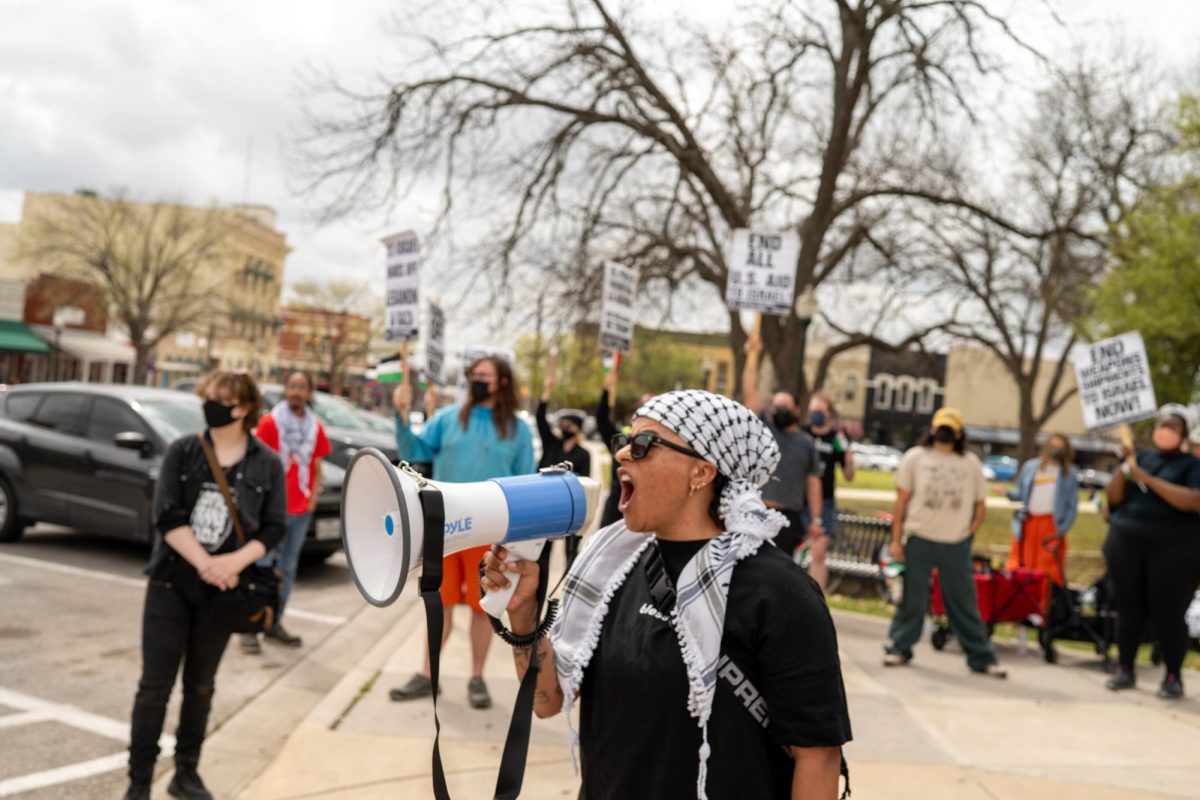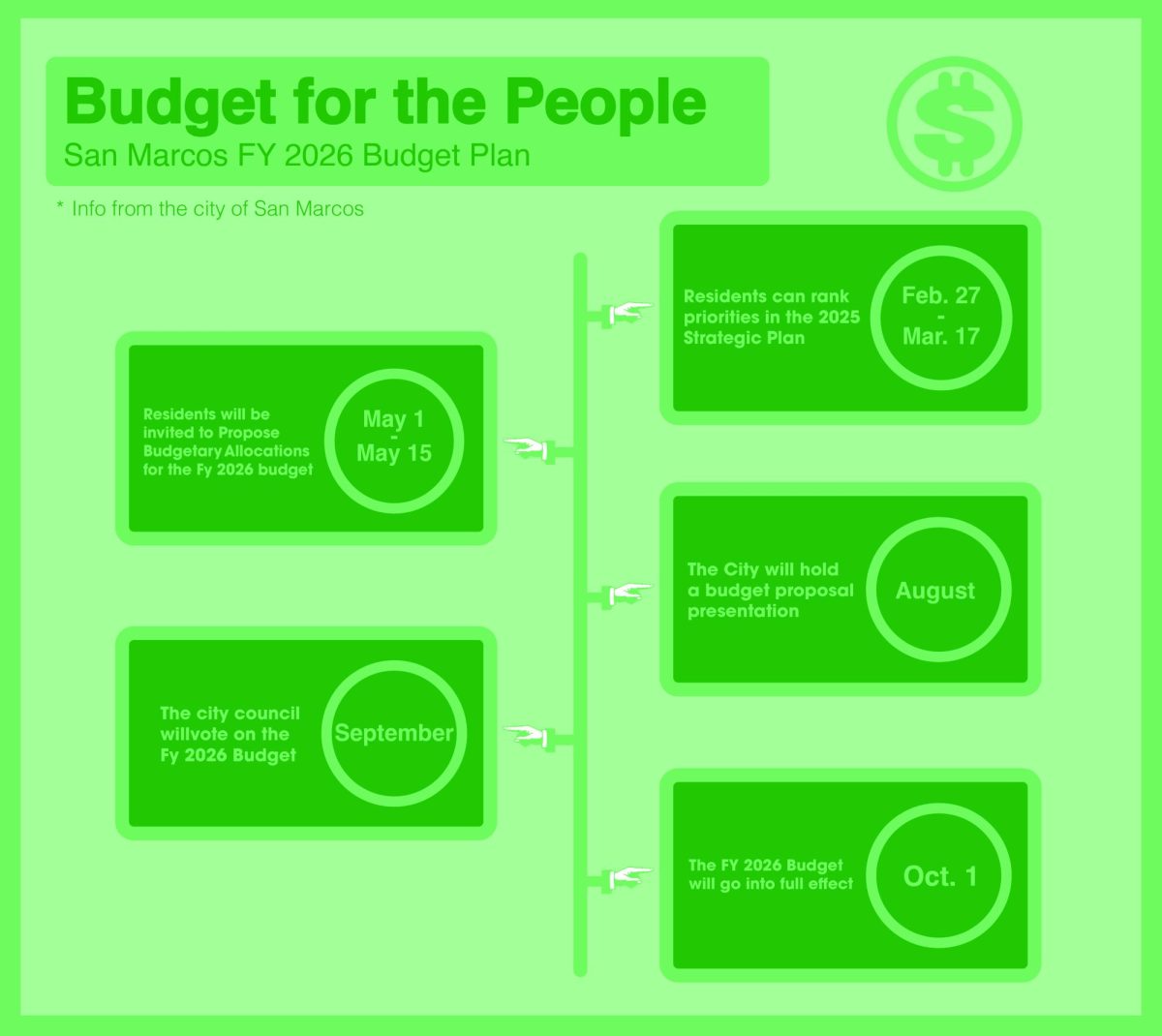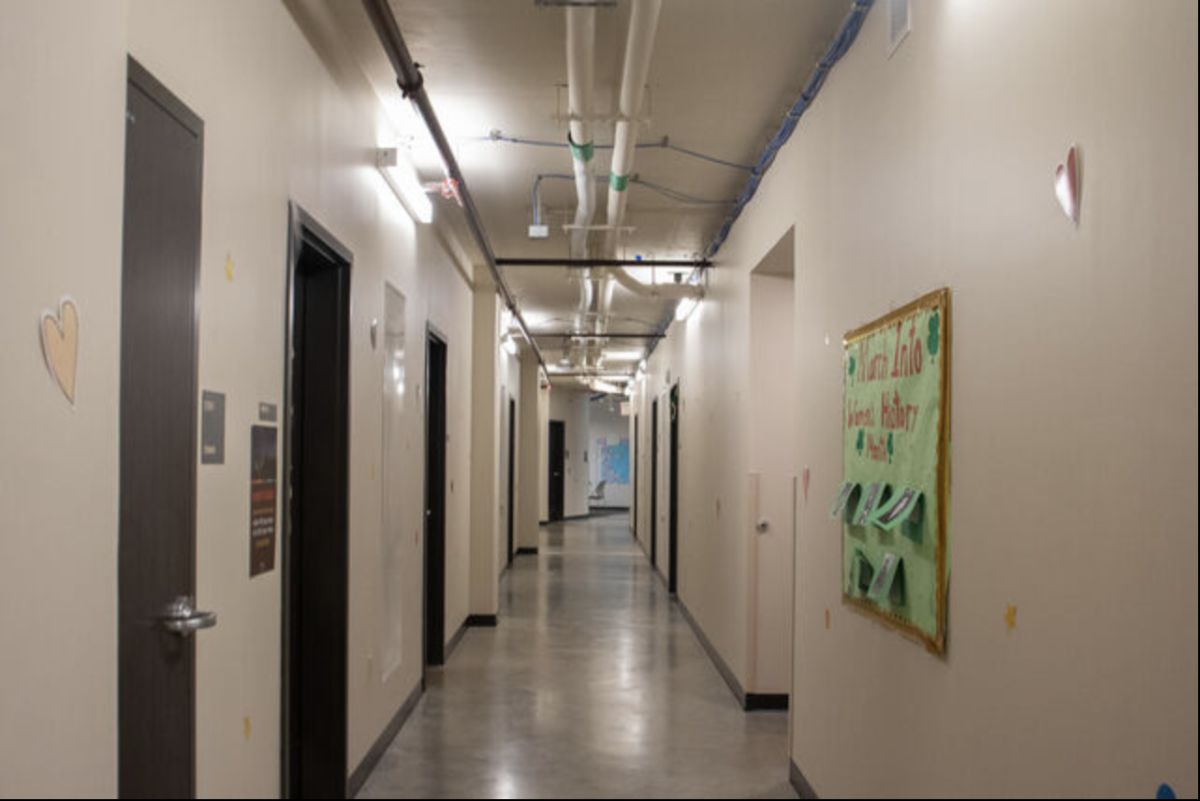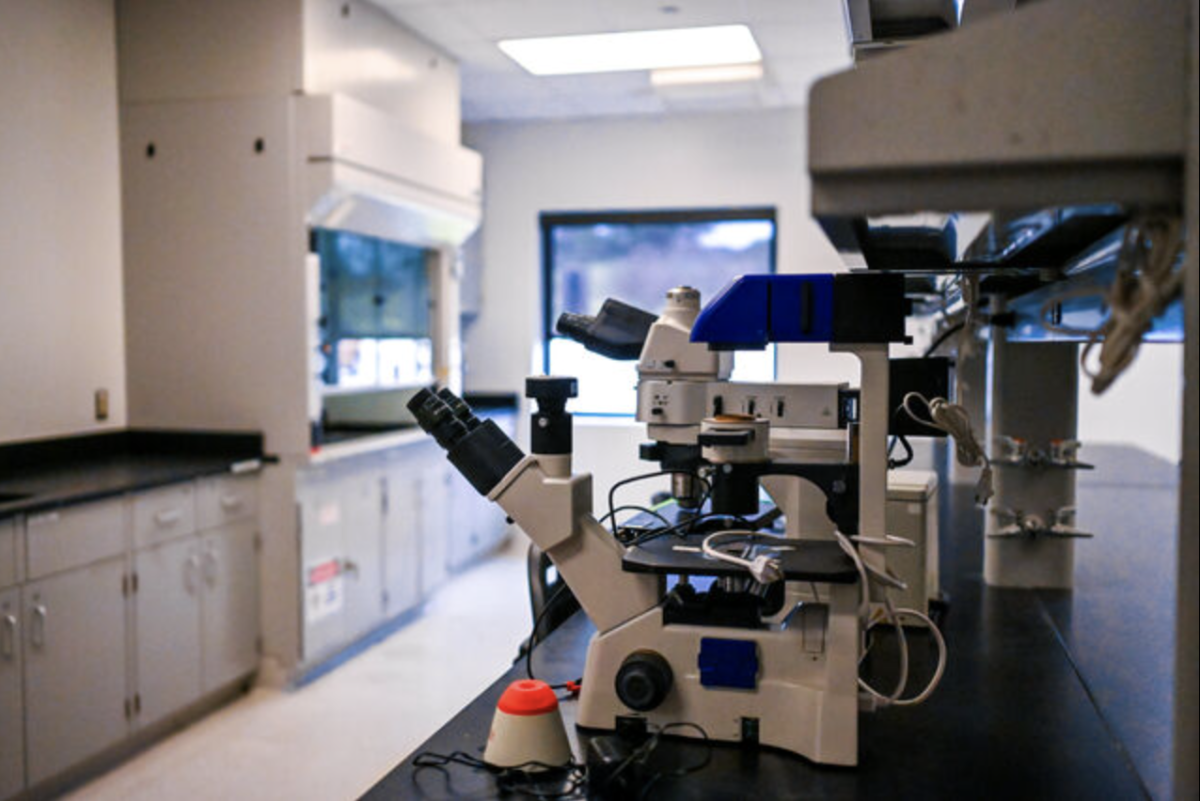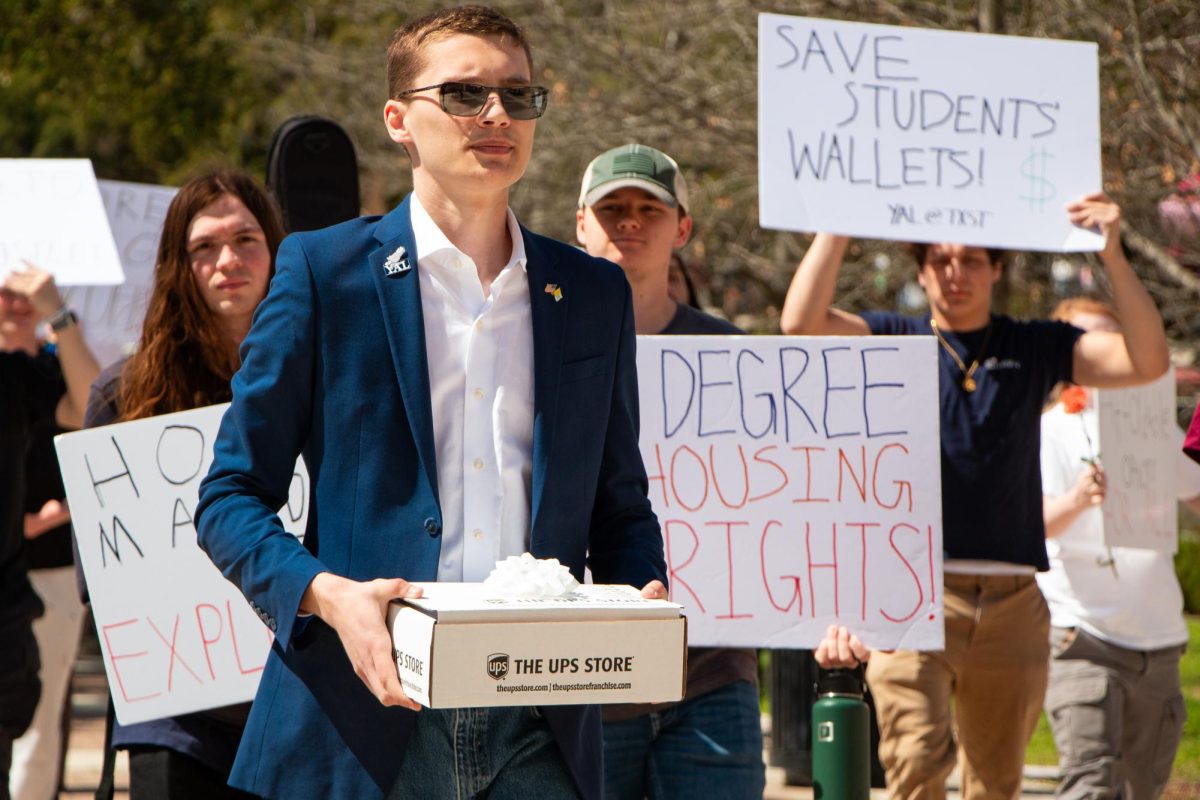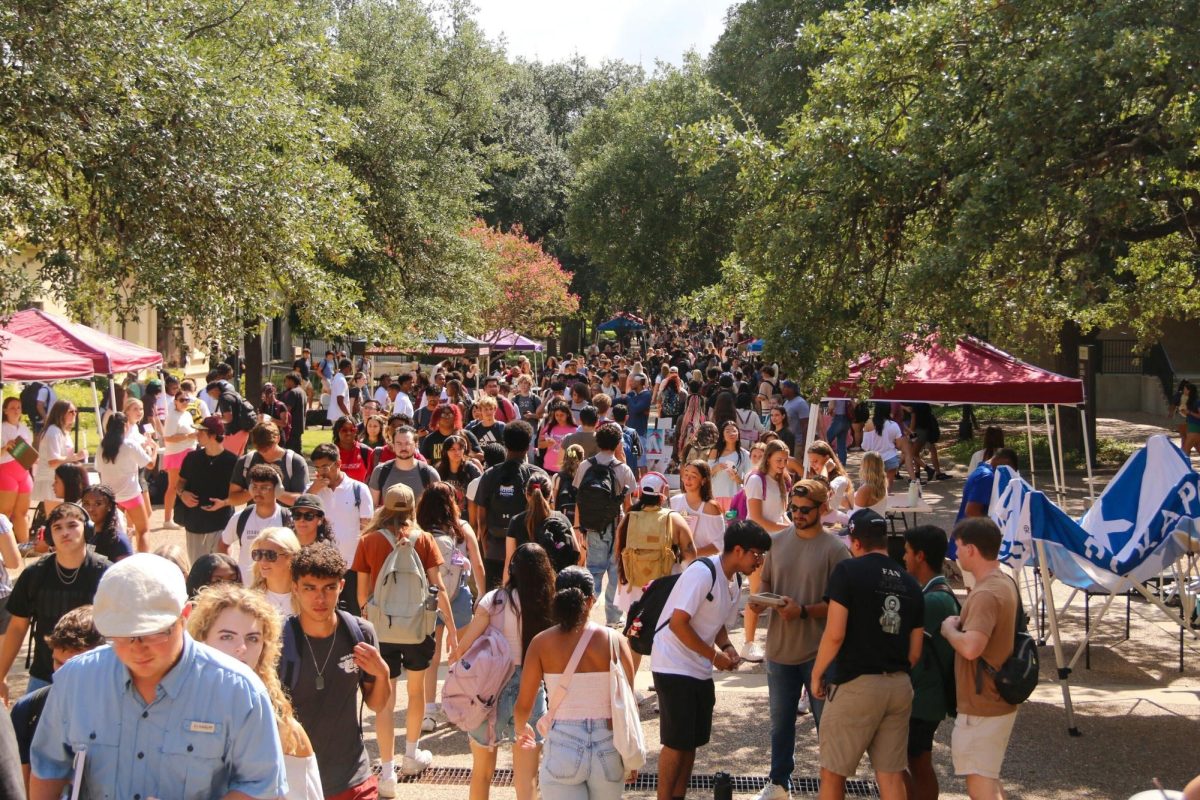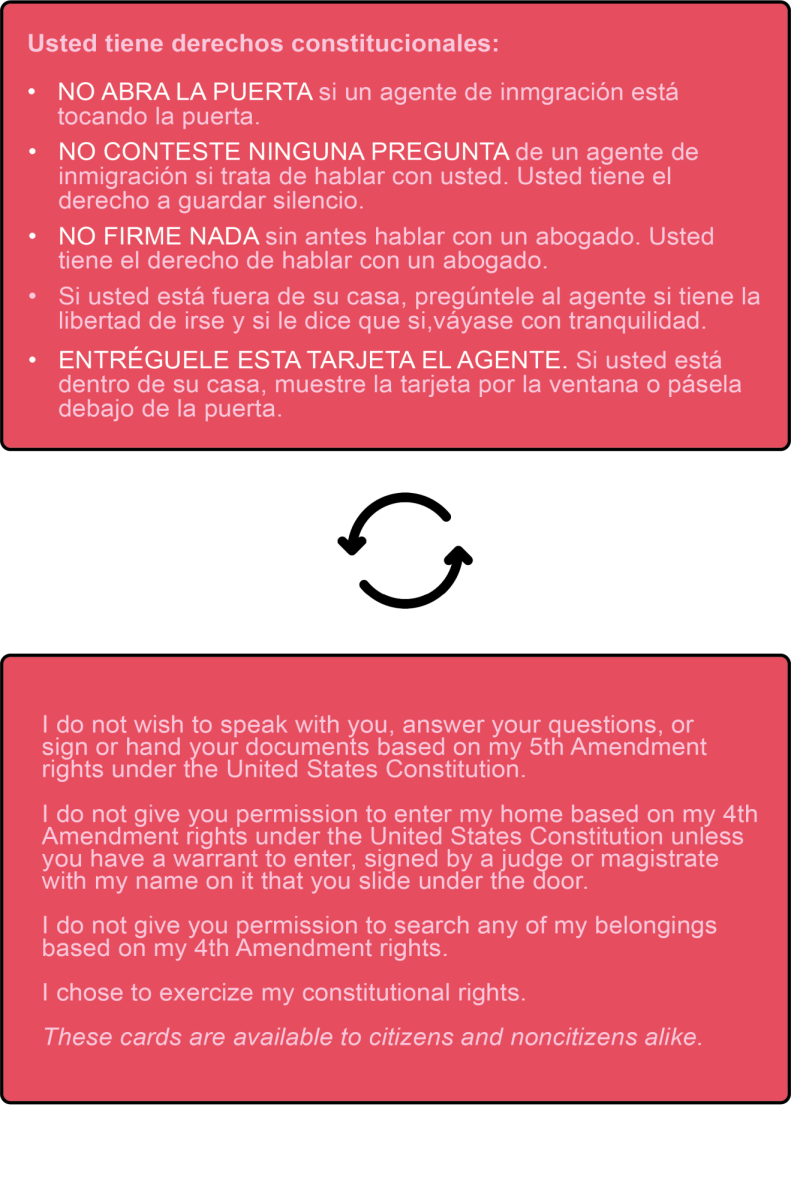Editor’s Note: On Nov. 24, The University Star’s Assistant News Editor Timia Cobb and Editor-in-Chief Jaden Edison met virtually with University President Denise Trauth, Provost and Vice President for Academic Affairs Gene Bourgeois and Student Health Center Director Emilio Carranco, to talk about COVID-19, vaccinations on campus, decisions surrounding Thanksgiving break, in-person commencement and more. Some questions have been edited for brevity and clarity.
With the [Thanksgiving] break coming up, there are big questions about what’s going to happen after. A lot of it is faculty discretion, so if they want to continue with online course material or in-person, it’s up to them. But is there an emphasis, from the administration, on faculty members moving courses online?
Provost Gene Bourgeois: It really is an individual decision, and it really does map back to the faculty member. If I’m teaching my British history classes, for example, how many class meetings do I have left if they’re in-person? What are those assignments going to look like for the students over the next two meetings? What are the learning outcome expectations and then, you know, I figure out what my attendance pattern is prior to going into the Thanksgiving break and then I’m just saying, okay, if it looks like most students are not even going to show up on the Monday or the Tuesday after Thanksgiving break, then maybe I just go in and Canvas people now and say, ‘are you going to be here or not?’ If you’re not, then let’s just all go synchronously on Zoom for the end of the semester. But then we’ve got other faculty and students who have been kind of religiously showing up for the classes. For them, my guess is they’re gonna say, ‘no, we’re fine, we didn’t travel over Thanksgiving or whatever, and we’re going to continue to be attending in person.’
[Do you foresee instructors being] provided the same discretion after spring break?
Bourgeois: It’s a little early to say that after spring break it will look exactly like it does right now primarily because, right now, we’re only looking at two weeks left in the semester. Going into spring break, it’s more a matter of them finishing out the last eight weeks of the semester. I think part of it would depend on what Dr. [Emilio] Carranco and other public health authorities in the [President’s] Cabinet are seeing going into and then coming out of spring break, regarding the guidance that we’ll give to faculty staff and students as they come out of spring break. If it is not looking good coming out of spring break, then absolutely we would probably make a central decision about the week or two after spring break.
Of course, what we don’t know, and it’ll be a matter of timing, is whether or not the round of vaccinations from the vaccine gets out to our university. For example, as an essential business, that would be obviously made available to our students, faculty and staff. It’s doubtful that two doses would be available and administered by spring break, but we’ll be possibly right in the window of administering vaccinations at that time.
Is it correct that the Pfizer or Moderna vaccines are what [the university] will be working with or hoping to work with next semester, and if so, could you go more in depth about that process?
Dr. Emilio Carranco: So, you know, things are evolving so quickly around vaccines. Yesterday [in a virtual Town Hall meeting with faculty and staff], I was talking about two vaccines, and today I’m talking about three. There’s a third vaccine that is moving right along, and we’ll probably be requesting authorization very soon, and that’s the AstraZeneca vaccine. That vaccine is delivered in a different way than the first two.
The first two, which are really novel vaccines, in many ways, include genetic material that is delivered to your cells, and then the cells create that protein—that spike protein that then the body reacts to in order to create the antibodies. That’s pretty new technology and very exciting. The effectiveness is 95% for both (Pfizer and Moderna). Most of the side effects are going to be similar to what we’ve seen with some vaccines, you know, local pain, tenderness, maybe feeling a little tired for a day or so maybe a little bit of a headache, even a fever.
The third vaccine, the AstraZeneca vaccine, is a little different. It’s also very interesting because it uses a harmless virus to deliver the genetic material to yourself. Then the cell does exactly the same thing as the other two: It creates a spike protein sub-unit that then the body responds to. [We’re] so, so, very excited to have those three.
The significance of the first two, aside from the novel vaccines, is that they require very cool storage, and not very many folks can do that. The Pfizer, one in particular requires ultra cold storage, and the university has the capacity to provide that, and we’re working on that as we speak. The Moderna doesn’t require ultra cold; it does require freezing, so we still have to look at that. The AstraZeneca is going to be different because it doesn’t need to be frozen. It is less expensive, but the effectiveness is not quite as good as the other two. Effectiveness is at least 70%, maybe as high as 90%, but not the 95% that we’re seeing for the other two. I’m predicting that by the time we get around to getting vaccines, there will be four, at least four, maybe five vaccines available to us.
We have the [Centers for Disease Control and Prevention] providing overall guidance for who should get the vaccine. And then every state has to determine based on its unique characteristics if there are any additional kinds of adjustments they want to make to the priority groups, and Texas is doing that. It’s doing that to the Texas State Department of Health Services. It has its own expert panel that’s looking at distribution in the state of Texas. As a matter of fact they just published their first priorities, and it’s consistent with what the CDC set, which is health care personnel, first responders, people who take care of folks in nursing homes. Then after that, health care providers that work in outpatient settings like we do at the Student Health Center.
Phase two is where I think the university might have access to the vaccine. In phase two we start to look at populations that are targeted by the CDC and others to receive the vaccine, and that would include people who are over 65 or have underlying conditions, people who are incarcerated, people who are educators and people who go to college. It is likely that all of that’s going to be happening right around spring break—[it’s] either going to be happening right before, during or right after, so it is difficult to anticipate exactly what’s going to happen. Most of the vaccines require two doses; you’ll get one and three or four weeks later, you’ll get a second. It is going to be a busy spring semester, as we’re trying to coordinate all of that. And, you know, one of the things we have to do as a university is assess the demand for the vaccine.
If you look at national polling data, we think somewhere between 50 to 60% of folks are interested in the vaccine at this point. Now, once we get more safety data out and people are more reassured about the safety of the vaccines, I think that will go up. But, that’s one of the things we need to do to make sure that we can vaccinate everybody on the campus that wants the vaccine. But again, I have to say, we’re not in complete control. The state determines who gets the vaccine when they get it and how much they get, so we’re trying to get ready for all kinds of scenarios. Maybe we only get a part of the vaccine that we want; we have to be ready to do something with it or maybe we get all of it, in which case we might be spending a week to two weeks trying to vaccinate everybody on our campus. So we’ll see how that goes, but I do think it will impact on other things that are occurring during the spring semester.
The federal government is paying for the vaccine. The federal government had already paid for the vaccine even before it was completely developed, and so the federal government will get the vaccine out to the U.S. population, but the vaccine is only one piece of it. You need people who will then take the vaccine and administer it, and then follow up afterwards, and so those costs are not being covered by the federal government. I’m not sure that the state’s going to cover all those costs, either. So there are additional costs to us to try to do those things, but I don’t think that cost will be a significant issue for our students.
President Denise Trauth: One of the things that, just to sort of benchmark here, at the university [is that we have] already spent $7 million. This is our money; it didn’t come from the federal government; it didn’t come from the state; $7 million dollars on COVID-19. Everything from the hand sanitizers and all of the spraying that we’re doing in the classroom. We’ve hired extra contract tracers, I mean, we spent $7 million. So, it would be foolish to not spend whatever it’s going to cost here to get the last piece done, which is really the most effective piece. We’ll just have to dig into our pockets and find that money.
Anyone who lives in residential halls is asked to provide proof of meningitis vaccination shots. Do you think, at some point down the road with COVID, that’s going to be something you all look for when students enroll or before they arrive at Texas State?
Carranco: I doubt it, you know, the state in general tries to limit those kinds of requirements because they can be an obstacle sometimes for folks. I don’t really think that’s going to happen, but we don’t know. I think we’ll have to wait and see what happens. I just don’t think that that’s the direction the state will take.
Bourgeois: I think it’s probably important to reiterate that that’s a direction the state would have to take. We don’t see Texas State University making a unilateral decision about either that or if that might be required.
Trauth: That’s right. What we require is required by law.
Regarding Thanksgiving break, and also the beginning of the semester, it was recommended that students take a two-week quarantine [before returning to campus]. That being said, will there also be an enforced (required) quarantine for students who will be living on campus before they come back from winter break?
Trauth: When we recommend the quarantine, we recognize that some students will have jobs, they have to work, so we understand that. There’s just a lot of other reasons why people can’t be in a strict quarantine for two weeks. What we really are hoping students will do, and the students in the residence halls, but also all of our students—because actually the spread of the virus has not been on the campus, it’s been in the community—do whatever they can for two weeks to stay away from large gatherings, to stay away from places where there isn’t social distancing and try to stay with their families.
Bourgeois: I think I used the term, you know, self quarantine, voluntary quarantine, and that should tell you really what our intention is. We won’t be requiring any quarantine when students come back. I actually set it for all persons returning to Texas State; I just believe it would be pertinent for faculty and staff also, depending on the circumstances of their holiday breaks to think about, again, some kind of self-quarantine-like behavior in the days before they do return to campus. For the faculty, that may not be until around January 18 or 19. For staff, that may be a little earlier, but definitely for the students before they come back to San Marcos or Round Rock, whether they live in the resident halls or not, I strongly encourage them to do that and to get tested at the same time.
Carranco: I think sometimes we use the terms isolation [and] quarantine, and people get confused by that. What we’re suggesting is even a step below a full quarantine. We know from contact tracing data, that a lot of the infections at this point have been spread in social gatherings, small and large. I mean, sometimes people visualize social gatherings as like parties. Not necessarily. It can be a small family gathering. I think what we’re saying is, look, you’re going to have the benefit of having been through a holiday break; you will live even through the New Year holiday itself. What we’re saying is then what you need to think about is getting yourself mentally and physically prepared for the spring semester. What that means is making a conscious decision, that you’re not going to go and socialize with a lot of folks that are not part of your immediate family or friend circle, because that’s when people are getting infected.
We want to start the spring semester in even better shape than we did the fall. In the fall semester, we brought people in from all around the state. And in the first few weeks, we did see a little bit of an uptick in cases. That’s not because they were getting infected on our campus; it’s because they brought the infections with them. So knowing that, what we’re saying to everyone is: Look, let’s not do that for the spring. It’s going to be more of a challenge because we know COVID is surging around the country, and people have to be extra careful over the holidays, even more reason for us to be intentional about avoiding those kinds of gatherings in the two weeks before classes begin so we have a better start.
If you can get tested, get tested, because that’s just another prevention measure. I mean, it’s preventive in the sense that if we know even before you get here that you’re positive, we can take action before we have spread to others. I think that combination of intentionally trying not to go out and socialize with a lot of people outside of your immediate circle and getting tested if you can, is going to help us start the semester in much better shape. We’re also going to make a very intentional effort at the university to provide more testing on campus in that first week or two. So I think if we all do those things, we have a pretty good chance of starting this semester in even better shape than we did in the fall.
It’s been made clear that you all haven’t found any evidence of COVID transmission on campus, but are you at all worried about any spikes? Just recently, we’ve seen photos of football players high-fiving people in the stands, or you might have people here and there without masks—at the volleyball games there have been people who haven’t been socially distanced. Those are all things that could put people at risk of COVID-19. Is that something you all are concerned about?
Trauth: Yes. In a word, we are concerned. We try to reinforce as much as we possibly can what I think are pretty simple messages. Wearing a face mask right now is the single most effective thing that you can do, and that’s not Denise Trauth saying that, that’s scientists and medical doctors saying that. But there is also a need for personal responsibility here. I mean, we cannot police, if you will, two whole big communities here in San Marcos and Round Rock.
One of the things [the Sun Belt Conference] did after the beginning of the football season that was really very effective, the commissioner announced he was levying a $5,000 fine on any non-player that was on the sidelines. The coaches, trainers, MDs, whoever was on the sideline that wasn’t a player, if they didn’t have a face covering on, it was a $5,000 fine and very quickly people had their nose and mouths covered. So, I think where it’s possible to take those kind of actions, we certainly are taking that, and as I said, you also have to have a certain amount of personal responsibility here.
Carranco: Before we started the fall semester, there were a lot of questions about what would work and what wouldn’t work, and I think there were concerns that bringing students together in the classroom or having to live on campus was going to somehow be the source of this incredible spread of COVID-19, and because I think the community came together and really did a great job of following the health and safety measures that were established, we didn’t see any of that. As a matter of fact, I think it’s almost protective to be at college. The reason for that is because we do have all of these health and safety measures in place, and they have been very, I think, very effective.
When we put the contact tracing team together, one of the special things we wanted to look at was, is there any evidence of spread in a classroom, in a residence hall? We’ve been looking for that from the very beginning, and we simply have not seen it. We’ve seen isolated cases, we’ve seen people who were close contacts, but we haven’t seen any evidence of transmission across the classroom or residence hall. We haven’t seen that coming out of our football games, either, because certainly, some folks might have thought, well, that’s another place where this can happen, and we haven’t seen it. Now, that can be explained for a lot of different reasons.
I think, first of all, the conference made the decision that it would not have full capacity crowds, you know, most universities made that decision. So, we’ve been able to keep our capacity much lower than what it normally would be. We also decided to go to reserve seating for most of our folks attending the games, which means that there’s spacing that’s being built into the seating. Our athletes, coaches, and athletic trainers, all of them are being tested multiple times a week, and so we know that the folks that are on the field are not infected. I think all of those measures taken together have made it safe to actually go to a football game, and so I’m not really worried about that. I think that translates over into what’s happening with commencement as well. It is a similar situation.
President Trauth made a point earlier that there is a level of personal responsibility people should [have], but I do think it has to be factored in that the number of people testing, that are attending football games, there could be a case where not everyone is getting tested, and you’re not seeing the transmission [because of it]. Yes, there is that level of personal responsibility students and faculty have to convey, but at what point from the administrative level do you say, ‘we’re going to protect people from themselves’ and when is the point where enough is enough, and you have to step in and make that decision?
Trauth: Let me just talk about two things: One is a specific example when we stepped in, the second is the holistic review issue. Fairly early on in this semester, we were concerned about the residence halls, and we were concerned about spread in the residence halls. It’s not that we had evidence, but we but we really wanted to get out in front. That’s when the university made the decision that students could not have guests in their sleeping rooms. They could have guests in the residence halls but not in the sleeping rooms. So, that’s an example of overtly making a decision and, to use your language, to save people from themselves. So, they weren’t bringing somebody into their sleeping room who could then infect them. The other half of your question, really, I think goes to the holistic review. At what point do you say, ‘we’re going to mandate that their debt, all classes go online, and we’re going to mandate that all staff work from home’ or any of those kinds of draconian measures, and that’s what we call a holistic review.
Carranco: You asked about football, so I’m going to address that very quickly, and then go to holistic. Relative to football games, if we saw evidence through contact tracing, that we were getting cases coming out of football games—if the public health authority with whom I meet every single week to discuss what we’re seeing and what they’re seeing, we share information every week. If in either one of those two situations we saw evidence that there was a problem with football games, we would take action similar to what President Trauth mentioned about making adjustments in the residence halls, but we haven’t seen that.
But, you’re right. I mean, if people don’t get tested, or if we’re not aware, something like that could give bias, but between the public health authority and us, I think if there was a real problem, we would probably hear about it. So, that’s the first thing I would say relative to when we make a major adjustment in the way that university operates. Every week, we monitor a set of indicators, and so we’re looking at case counts in the counties around us. In the state, we’re looking at positivity rates; we’re looking at the same information on our campus. Last week, we tested almost 1,900 folks on our campus, and we had 39 positives out of all of that testing. We look at that information as well—that gives us a sense of what the infection rates are in our university community and whether things are going in the right direction or wrong direction.
I’m pleased to report that things are going in the right direction at Texas State. A couple of weeks ago, we had hit a positivity rate of 4.1% and now we’re back down to 2.1%, way better than what’s happening in the communities around us and in the state. So, we look at all of that, but we don’t stop there. We also look at what’s happening with hospitalizations in the area, the capacity of hospitals to take care of patients with COVID-19. We also look at the ability of our contact tracers to get to positive cases. Within 24 hours, we look at our ability to isolate and quarantine on campus; we look at our ability to provide basic services on our campus, and so we look at all of these things on a weekly basis.
That is what will help to drive our decision making, and so I try to reassure folks that we’re doing that, and as a matter of fact, the university has taken steps in the past to make major adjustments—last summer was a perfect example of that. We saw case counts and positivity rates going in the wrong direction in the state of Texas and in the communities around us, and we decided that we would go to remote teaching in that second summer semester. The university is committed to doing what it has to do to keep people safe, but we’re looking at a lot of data every week to make sure that we’re making good decisions.
Bourgeois: Students have obeyed our guidance regarding face masks and face coverings, and I just want to emphasize that, you know, I get a daily report, and I got it again this morning [and have] since August 24. So, the number of days plus the numbers of thousands of students on this campus who are supposed to wear face masks, there have only been 16 official referrals to the Dean of Students Office for not complying with someone’s order [telling a student] to put their mask on or cover their nose or whatever have you is a violation. So, 16 referrals since August 24. I think when Dr. Carranco speaks about how our students, our faculty and staff, had adhered better to our protocols wearing face masks, using hand sanitizers and other social distancing forms appropriately, they have and again—the referral data is another data point, you know—that proves to me students have done what it takes.
President Trauth and I remark about this all the time: You can walk around this campus and even outdoors [and see] students are wearing face masks. Students in groups are wearing face masks. You rarely, rarely, rarely see someone even outside who’s not wearing a face mask. So, I think Dr. Carranco is very proud, rightfully so, of the adherence to our guidelines that our entire Texas State community has done.
Carranco: You can’t get everybody to do the right thing all the time, right? We know that. We know that, but here’s an important piece of information: If we get enough people [to follow guidelines,] it works. We know from scientific research that if we get 80% of people to wear face masks all the time that we can bring this pandemic down under control with just face masks, we know that. So, you’re absolutely right: Not everybody does it all the time, and there might be rare situations where we see people that aren’t complying; [it’s] pretty rare. Dr. Bourgeois is correct. I am so proud of what the students, faculty and staff are doing on this campus, absolutely. It’s not perfect, but if we get enough people to do it, it works and has been working.
I guess now we can talk about commencement a little bit. When we talked in May, people were asking ‘why can’t we have summer commencement?’ or ‘why can’t we have it at Bobcat Stadium?’ and we talked about two things: The heat, and if [there is] inclement weather, you can’t move people to Strahan Coliseum. Now that the heat isn’t a concern but the [inclement] weather still is, what went into the decision of hosting an in-person commencement [this time around]?
Trauth: Well, a lot of things went in, and I feel I should preface this by saying not everybody in the university community agrees that we should have an outdoor commencement in December. But a couple of things: One is we’ve learned a lot more about COVID-19. We know so much more now than we knew when we made the decision to have the remote, virtual commencement in August. We know that outside, with social distancing, [essentially what we’re talking] about for commencement is 10% capacity. As we have said, we don’t know about any spread that has happened as a result of football, and that’s limited to 25% capacity. This is limited to 10%, so we know [with] the social distancing and it being outside, the chances of [COVID-19] being transmitted if everybody wears a face mask are very low. It’s based [on] as much on knowledge about COVID as anything else.
We also know that our students very much wanted commencement. I heard that over and over that our students wanted an [in-person], socially-distanced commencement, and indeed when we did the survey of students, we found out that, I believe, 85% of our students that responded said that they wanted to come to a commencement this December. So, it was a combination of more knowledge about COVID and hearing from our students. Frankly one thing I think that has happened this fall is that we have gained a lot of confidence in our preparedness. I can tell you, last May when we had our work groups working, meeting sometimes twice a week, we were afraid. I think all of America was afraid. We didn’t know what to do, and we weren’t sure what was working, but once, for example, it became really clear face masks worked, I think that gave us a level of confidence in our planning, and over the course of this disease we have [gotten] more and more confident about what you can do safely and what you can’t do safely, so it’s a combination of factors.
Bourgeois: The survey did return an 85% yes response from those students who would be graduating in the fall, and by the way, for the summer and spring candidates who didn’t get to do an in-person ceremony—they were at 80%. Now, on the faculty and staff side it was flipped; it was about 22% for faculty and nearly 30% for staff. I think the other thing we recognize is that we’re hoping candidates, as they come to these graduation ceremonies or the graduates who are going to do the make-up—they’re obviously bringing up to four family, friends, you know, loved ones with them—we hope that they also practice the same behaviors that we have expected all along. That is if you’ve got mom and dad, mom and dad [ideally] have been together but not with anyone else before they come to our stadiums.
In other words, we still have our bubble concept in place with the guests who come to our commencement ceremonies. So, the candidates on the field, a rough count would be no more than 625 for one ceremony, which means we can have more than 6-foot spacing between each candidate on the field, about 8 or 9 feet. Likewise, up in the stands for those four tickets that are going to be reserved in blocks like that, will definitely have more than 6 feet of spacing between those groups. We feel like we can put a pretty safe commencement for our graduates and for their family, friends and loved ones.
Have graduates been updated on the number of tickets they can have?
Bourgeois: I know we’re about to do one update, and that is for the make-up ceremonies. In other words, the ceremony is on the Thursday. We had surveyed graduates to see if they wanted to attend a 9 o’clock, 2 o’clock or a 7 o’clock ceremony. We need to balance the numbers better than they did in the survey; we’re actually collapsing the three into two ceremonies, so a message will go out to them telling them they’re either in the 11 o’clock or the 4 o’clock ceremony. Then we will be able to reiterate the guidelines and instructions around the four guest tickets.
One thing that was mentioned in the town hall was that the furloughs were not on the table but, President Trauth, you mentioned pay decreases. Is that accurate?
Trauth: We’ve only had conversations about pay decreases for Cabinet members, not for faculty and staff, and we have not talked at all about furloughs. One of the things I stressed yesterday is that we began the financial crisis part of the pandemic in, what I would call, very good financial shape. Now, that does not mean we have a lot of extra money. I have to be careful when I use those words, but we were not in the situation that a lot of schools were in— [schools that didn’t] have any other choice but to furlough people. You never say never, but we have not talked about furloughs at all during the whole pandemic because what that means, basically, is two things. One, let’s say it’s a two-week furlough: You’re not paid. But the other thing it means is that you do not come to work, you do not answer emails, you do not take professional telephone calls, you simply unplug yourself from the university. I can tell you that we are staffed in such a way that if a group of employees were put on a furlough, we don’t have replacement people to do their jobs. Let’s say student business services or the counseling center—the advising office—we don’t have replacement people. So furloughs is a fairly draconian step that you take, if you have to, financially, but it isn’t something that we have talked about.
Bourgeois: One other item about furloughs, at least in respect to how they are commonly understood, is we don’t mean layoffs. Here, we mean staff or faculty taking unpaid days off. It’s one time savings, so, in other words, if the university is otherwise able to figure out how to cover certain costs with other one time money, then that suffices. You actually don’t need to do furloughs to cover one time budget situations.
I want to build on the question about the pay decreases regarding Cabinet members. A few months ago, there were obviously no pay cuts with Cabinet members on the table at that time. What is that discussion like this time around, and what would that look like for the university if that were something to happen?
Trauth: Until we get into the legislative session, it’s very hard to know what we’re even talking about. So, we have only general conversations. There isn’t any specificity that I could give you today. But, we have had those conversations at the Cabinet level. As I explained yesterday, we are going into a session where there’s a hole in the Texas budget, but we don’t know the size of the hole. Right now, it’s hard to know what the members of the legislature are going to be looking at when they look at decreases. Higher Education has already taken a decrease. We took a decrease in this current fiscal year, and other parts of the Texas budget have not necessarily taken a decrease.
Until we get into the legislative session and start to have some conversations, it is really hard to know what we’re talking about. The other side of the two is enrollment for the fall because, our funding, both in terms of subsidies in the legislature and tuition and fees, is based on enrollment. So, we also need to get a better sense of what fall enrollment is going to look like. I stressed [the Cabinet pay decrease conversations] yesterday because I don’t want people to panic. We’ve had twin priorities from day one with COVID. One was student success—keeping our students moving down the path toward commencement and everything that entails. The other was preserving the jobs of our faculty and staff, and we have been laser focused on those two goals.
Regarding resident assistants, essential workers and custodial staff, would they possibly be seeing potential pay increases?
Trauth: We’ve had conversations about all of those things that you’re raising, and one of the concerns that we have is our inability right now to reward all of our faculty and staff for the hard work. It is the case because we have not seen spread on our campuses that all of our faculty and staff on one level are at risk because the pandemic is all around us; it’s a global pandemic. But, if you talk about people who work at Texas State, we are not seeing spread on our campuses. I know that there are some positions that would make people look more vulnerable than others, and that’s true, but even in those more vulnerable populations we’re not seeing the spread that you might just sort of think, ‘for sure there will be spread among x group of people.’
I do think that there’s a sensitivity to our lowest paid workers at the university, to people who have been on the campuses of the university and didn’t have the option of not being on campuses by virtue of the job that they do, but I will tell you this is very complex—when you’re looking at one group and you’re saying, ‘well they worked harder than another group.’ I read all the comments on the surveys we’ve been doing, okay, and we’ve done six. One of the things that I can tell you is that everybody who works for Texas State is working hard. There is a fatigue factor and an exhaustion factor that I see, and I hear and I read about everybody. So, what you’re raising is a complex issue.
It was mentioned yesterday that there is no emergency pass system in place for right now. I’m wondering if that is something Texas State is planning this semester, especially with everything that’s been going on surrounding the pandemic.
Bourgeois: No, at this point there’s really no interest currently in extending EP grades to this semester. When we [did EP] in the spring, it was primarily because of the swift pivot that all faculty, staff and students, in particular, had to make going from face-to-face to completely online education. This time around, it was deemed that, you know, faculty and students had preparation to basically get ready for whether it would be an in-person class, an online class or an A/B model class. So, there hasn’t been much discussion at all about extending [EP grades] once again this semester.
Can we go into more depth about the electronic course fees for students?
Trauth: We’re committed during the semester that no student will pay more in fees for taking online courses, whether it’s a full schedule or a partial schedule, than they would pay if they were in face-to-face classes. That’s the working premise, and you’ve probably heard a lot of different things about electronic course fees. But that’s really the central issue here: Nobody’s going to pay more.
And the last question I have is regarding the men’s basketball season starting [Nov. 25]. Obviously [the team is] coming off a very tumultuous summer with the Danny Kaspar investigation. I wanted to check and see if that investigation is still ongoing. I think it was unclear—when he resigned—whether or not that ended the investigation effective immediately, or is that something still ongoing?
Trauth: No, it’s not ongoing. It’s over.
Just building off of that, because there was miscommunication throughout the process of, ‘is he on leave with pay or is this happening?’ So I guess, in hindsight, are there any things you would like to say regarding that investigation? I know there were a lot of students, I recently saw on social media, that the Athletic Department has Black Lives Matter apparel. I think the message of this university is sort of shifting to this, you know, President Trauth, you said it yourself, ‘Black lives matter at Texas State; it is not debatable.’ So, I guess in regard to that investigation, is there anything in hindsight that you would alter?
Trauth: No, not really. I mean, I know that it’s very frustrating for me to say, ‘I cannot speak about personnel matters,’ [or] ‘I cannot comment on an ongoing investigation.’ I know how frustrating that is. I don’t know if you know that I have a journalism background; I understand that your job is to get the information, but my job is to make sure that we have a rock-solid process. I think that Alexandria Hatcher (Title IX coordinator) did a very thorough job; I don’t think there’s any question about it.
I think it took longer than most people think it should have taken, but that’s, again, because she was doing an extremely thorough job. She was doing it during the summer, which means that sometimes people aren’t immediately available when you want to talk to them. But, she absolutely followed her legal training, and she followed the correct protocol, and it took the time it took. I mean, I was impatient too—to have an outcome. But again, I never put any pressure on her to do it faster. She was doing what she needed to do; she’s a professional. She’s very good at what she does, and it took the amount of time that it took, and she brought it to a conclusion.



